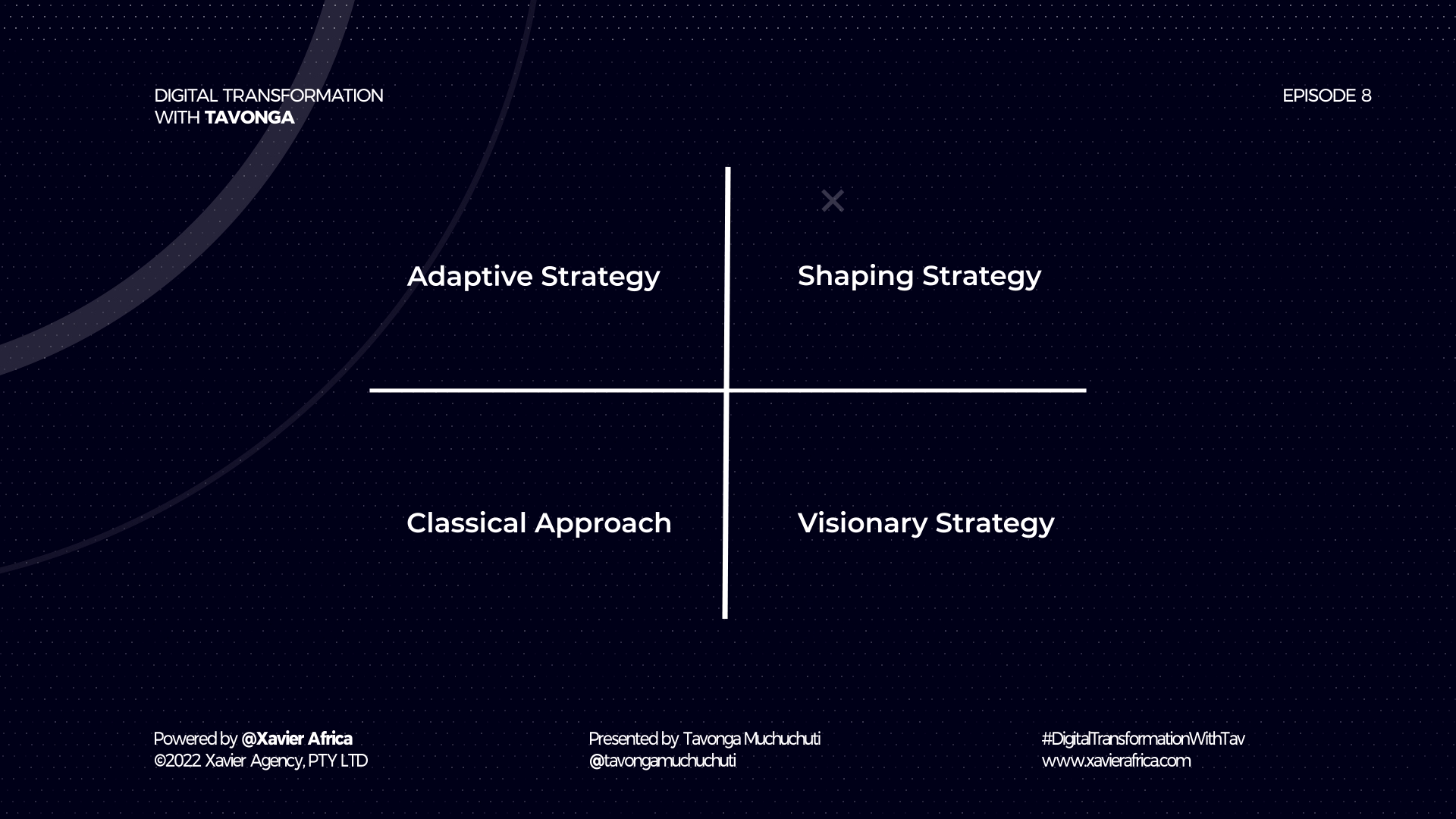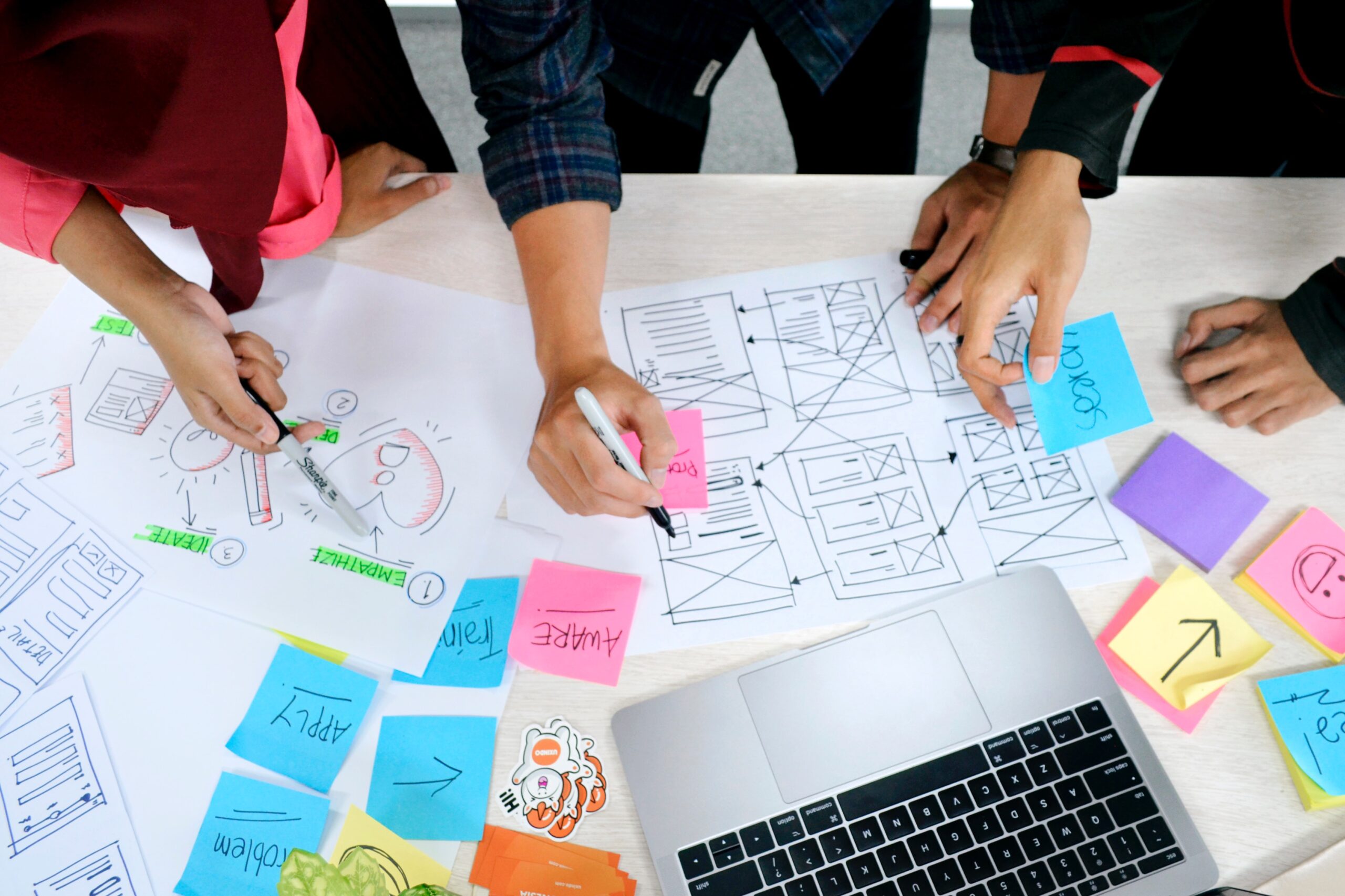We have looked at some of the technologies that companies have used over the last five to ten years, the technologies that organizations are now using, as well as some of the heavily theoretical technologies companies are looking to use in the future.
This week, we will be looking at how exactly your organization can be able to put all this information together in an effort to start the digital transformation journey. We will be taking a deep dive into the framework that we at Xavier Africa use when helping our clients with their digital transformation journey.
Strategic Grid Matrix

At the very top of the framework, we have the business strategy. The very first step the business must take before even considering the digital transformation journey is to clearly define where they want to be as an organization from a business direction. This assists them in knowing what kind of direction to take.
There are two main types of direction an organization can take to form a business strategy.
-
The first is to digitize the core business. The goal of digitizing the core business is to look at the various processes under the core business, and assess how the organization can use digital technologies to ensure that the inefficiencies within them are minimized whilst enhancing the customer’s experience.
-
The second is to find new growth opportunities. These are business lines that the organisation would not have been able to get into before the digital products and digital transformation became possible. For example, organizations like Botswana Post were able to use digital technologies to position themselves in businesses that they traditionally wouldn’t have been able to go into.
Once these two are established in terms of which direction the organization wants to take its business, the building blocks that make this goal a reality must be worked out and aligned to the organization’s destination and strategy execution.
The main building blocks that we have noted and analyzed to assist organizations in digitally building across the firm include the people, the processes, data, the technology, and the ecosystem.
The People

The people are the most important part of the equation because people execute, and are most likely to resist digital transformation, due to the fear of losing their jobs. Therefore, it’s very critical that organisations monitor their people, and put in place the right policies and processes to ensure that they are ready to embrace technology, and will be able to work in conjunction with it.
The Process

Secondly, we will discuss the process. When working with digital transformation and digital technologies, it’s necessary that the way that projects are handled in the company move from traditional project management methodologies, such as the waterfall methodology to new, adaptive project management methodologies. This means that the organisation needs to become more agile in how they approach development and business. Consequently, organisations need to change the old for the new. This will introduce things like design thinking, agile methodologies, etc. that ensure that organisations are streamlined for digital transformation.
Data

Thirdly, the data. Data is a very critical part of the transformation because data allows us to be able to implement artificial intelligence models that enable us to be able to create models from big data. Furthermore, data is the foundation by which an organisation will be able to leverage and use to build the infrastructure.
Technology

The next building block is technology, which is a highly integral part of digital transformation. Organizations need to make decisions such as deciding whether they will choose cloud solutions or their own infrastructure. Or whether they will use their own tech stack or not. Or whether they will be using JavaScript, Flutter, or another software? They need to decide on the direction they will take in the development and where they will get the talent and are they good enough to deliver on the digital transformation desired.
Ecosystems
Lastly, we have to work in ecosystems. Previously, organizations could work in silos in developing core technologies. Now, it’s easier to achieve big goals when organizations work together with ecosystems and communities to ensure that they’re able to get to the goal faster. That way, the burden is not only on the organization alone but is shared with various other parties that are interested in the core technology and the differentiation system that the business value will come from. Therefore, it’s necessary that organisations understand how their building blocks will align ecosystems, to be able to build the organisation and our digital. Over the next few weeks, we will look at every single one of these elements, from the business strategy to deciding on the new opportunities to look for, down to how to develop the building blocks for a strong digital transformation project.
Thank you for joining us this week.
